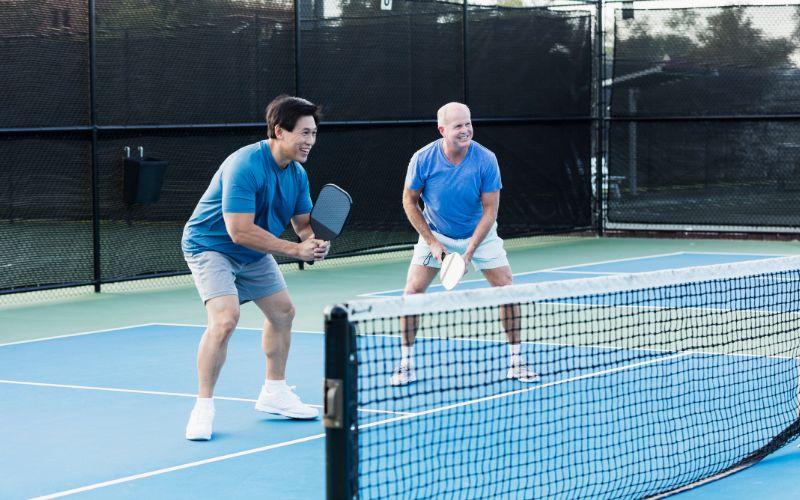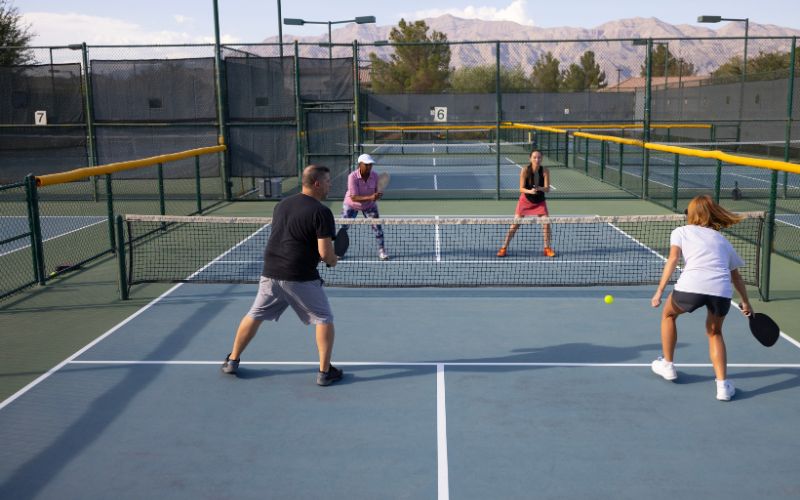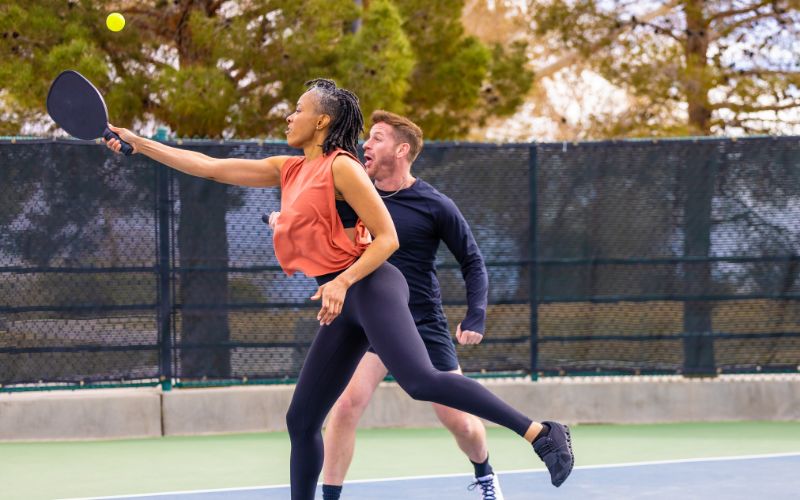Pickleball, a sport that combines elements of tennis, badminton, and ping pong, has gained immense popularity in recent years. As with any game, understanding the scoring system is crucial to enjoying and succeeding in pickleball. In this comprehensive guide, we will delve into the intricacies of pickleball scoring and provide valuable insights on how to score effectively in both singles and doubles play.
Pickleball Scoring Basics
Understanding the Scoring System
The pickleball scoring system is relatively straightforward, but it has its own nuances. The game is typically played to 11 points, and teams must win by at least two points. However, there are variations in scoring depending on whether you are playing singles or doubles.
Scoring in Pickleball Singles
In singles play, each player serves and receives on a rotation basis. The server begins on the right service court, and the first server serves until a fault occurs. The serving side’s score is called out first, followed by the receiving side’s score. For example, if the serving team’s score is 4 and the receiving team’s score is 3, the server would announce “4–3, second serve.”
Scoring in Pickleball Doubles
In doubles, two players on each team take turns serving, with the team’s score being called out first. The serving team’s score is announced followed by the receiving team’s score. Communication is key in doubles play to avoid confusion and ensure both players are aware of the score.
The Pickleball Scoring Rules
Rally Scoring
One unique aspect of pickleball scoring is the use of rally scoring. In traditional scoring systems, only the serving team could score points. However, in pickleball, both the serving and receiving teams have the opportunity to score points on every rally.
The Odd Court Rule
An interesting rule in pickleball scoring is the “score is odd” rule. If the serving team’s score is an odd number (e.g., 5), the server must serve from the right service court. Conversely, if the score is even (e.g., 4), the serve originates from the left service court.
First Server Exception
The first server exception is a crucial aspect of pickleball scoring. The team that serves first only has one player serving the first point of the game. After this, both players on the serving team get the chance to serve before the serve is turned over to the opposing team.
How to Score Points in Pickleball
Server’s Score Points with Precision Serving
Serving is a fundamental aspect of scoring in pickleball. To score effectively, focus on serving the ball accurately and strategically placing it where your opponents find it challenging to return. Utilize both your first and second serves wisely to gain an advantage.
Capitalize on Opponents’ Mistakes
Another effective strategy is to take advantage of your opponents’ mistakes. If they make a faulty serve or fail to return the ball within the court boundaries, your team earns a point. Be observant and ready to pounce on any opportunity to score.
Master the Non-Volley Zone
The non-volley zone, also known as the “kitchen,” is an area near the net where players are not allowed to hit the ball on the fly. To score points, position yourself strategically in this zone, forcing your opponents into errors when they attempt to hit the ball within this restricted area.
Scoring Points in Doubles Play
Coordination is Key
In doubles play, coordination between teammates is essential. Work on synchronizing your movements, covering the court effectively, and communicating efficiently. A well-coordinated team is more likely to score points consistently.
Take Advantage of Opponents’ Weaknesses
Observe your opponents closely and identify their weaknesses. Whether it’s a less accurate serve or difficulty returning shots on a specific side of the court, target those areas to score points. Adapting your strategy based on your opponents’ weaknesses can be a game-changer.
Strategic Serving in Doubles
In doubles, serving becomes even more critical. A well-placed serve can set the tone for the entire rally. Communicate with your partner to determine the best serving strategy, such as serving to your opponents’ weaker side or exploiting the odd court rule.
Common Mistakes in Pickleball Scoring
Miscommunication
One common mistake in pickleball scoring is miscommunication between teammates. This can lead to confusion about the current score, the serving order, or even the side of the court to serve from. Always communicate clearly with your partner to avoid such errors.
Forgetting the Odd Court Rule
Players, especially those new to pickleball, often forget the odd court rule. Remembering to serve from the correct service court based on the current score is crucial. Failing to do so can result in losing the serve or even the point.
Neglecting the Non-Volley Zone
The non-volley zone is a strategic area in pickleball, and neglecting its importance can lead to mistakes. Players sometimes venture into the non-volley zone at the wrong time, resulting in a fault. Stay mindful of the non-volley zone to avoid unnecessary errors.
Advanced Pickleball Scoring Strategies
Analyze Your Opponents’ Patterns
As you progress in your pickleball journey, start analyzing your opponents’ playing patterns. Recognize their tendencies, such as preferred shots, movement patterns, and weaknesses. Adjust your strategy dynamically during the game to exploit these patterns and score more points.
Adjusting Serving Strategy
Experienced players often adjust their serving strategy based on the score and their opponents’ reactions. For example, if your team is trailing, consider serving more aggressively to put pressure on the opposing team. If you have a comfortable lead, focus on consistency and minimizing errors.
Staying Calm Under Pressure
In competitive pickleball, maintaining composure during crucial moments is vital. Stay calm under pressure, especially when the score is close. A steady mindset will enable you to make better decisions, reducing the likelihood of unforced errors.
How Many Points do you Need to Win Pickleball
In pickleball, the number of points needed to win varies depending on the type of game you are playing—singles or doubles. Generally, a standard game of pickleball is played to 11 points, and a team must win by at least two points. This means that if the score reaches 11-10, for example, the game continues until one team establishes a two-point lead.
It’s important to note that pickleball scoring employs a rally scoring system, where points can be scored by both the serving and receiving teams on every rally. This is a departure from traditional scoring systems where only the serving team could score.
In addition to the standard scoring, there are variations that can be played, such as playing to 15 or 21 points, depending on the preferences of the players or the tournament rules. However, the 11-point game is the most common format for casual play and many competitive matches.
Conclusion
Mastering the art of scoring in pickleball requires a combination of skill, strategy, and understanding of the rules. Whether you’re playing singles or doubles, paying attention to the pickleball scoring system and employing effective strategies will significantly enhance your chances of success. Keep practicing, stay mindful of the score, and enjoy the exhilarating experience that pickleball offers on the court.
FAQs on Pickleball Scoring
How many points are needed to win a standard game of pickleball?
In a standard game of pickleball, you need to score 11 points to win. However, it’s essential to win by at least two points. This means that if the score reaches 11-10, for instance, the game continues until one team establishes a two-point lead.
Can you explain the scoring system in pickleball singles?
Certainly. In singles play, each player serves and receives on a rotation basis. The server begins on the right service court, and the first server serves until a fault occurs. The serving team’s score is called out first, followed by the receiving team’s score.
What is the “score is odd” rule in pickleball?
The “score is odd” rule is an interesting aspect of pickleball scoring. If the serving team’s score is an odd number (e.g., 5), the server must serve from the right service court. Conversely, if the score is even (e.g., 4), the serve originates from the left service court.
How does the first server exception work in pickleball?
The first server exception is crucial in pickleball scoring. The team that serves first only has one player serving the first point of the game. After this initial point, both players on the serving team get the chance to serve before the serve is turned over to the opposing team.
Is the scoring system different in pickleball doubles?
Yes, in doubles play, two players on each team take turns serving. The team’s score is called out first, followed by the receiving team’s score. Effective communication is essential in doubles play to avoid confusion and ensure both players are aware of the score.






